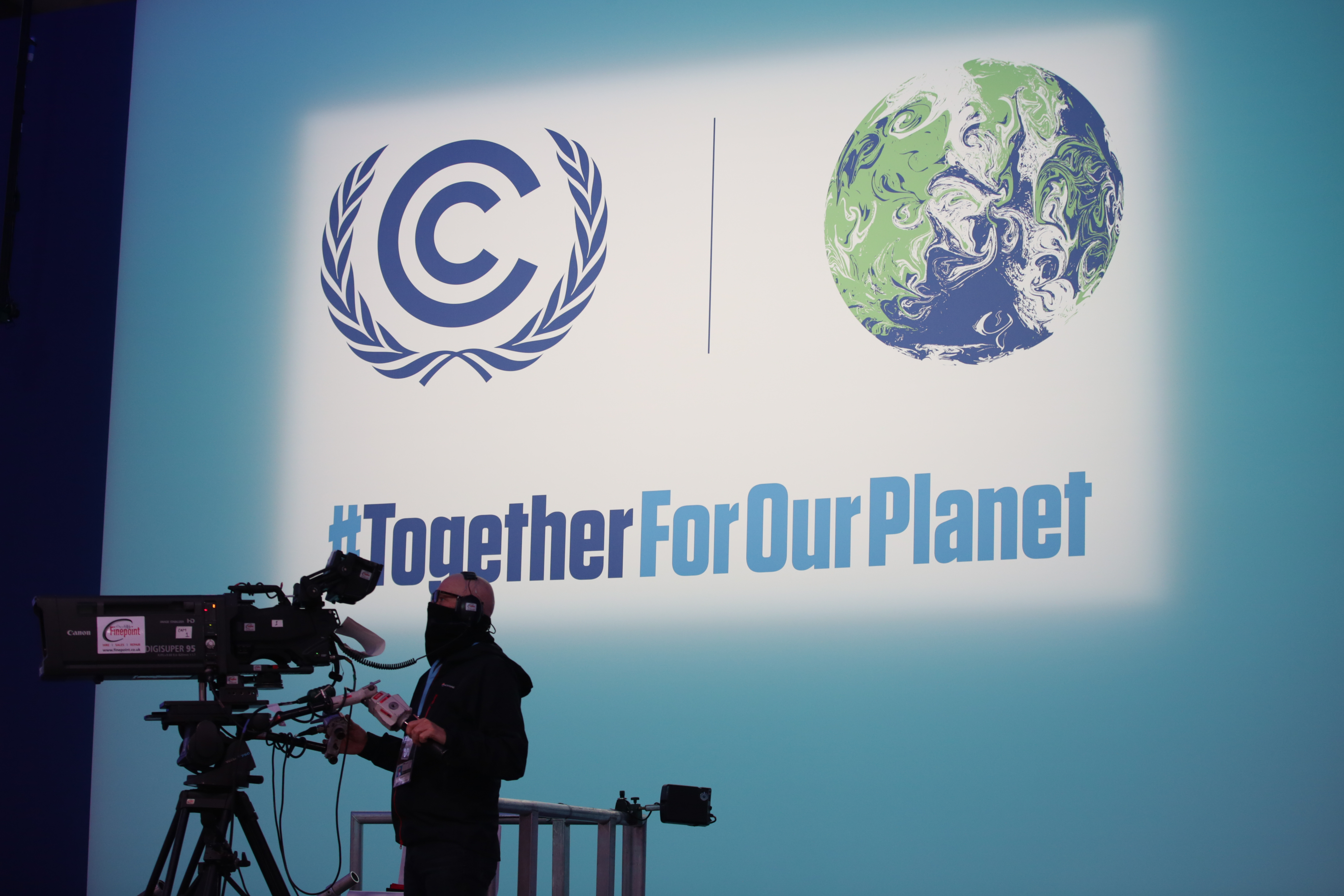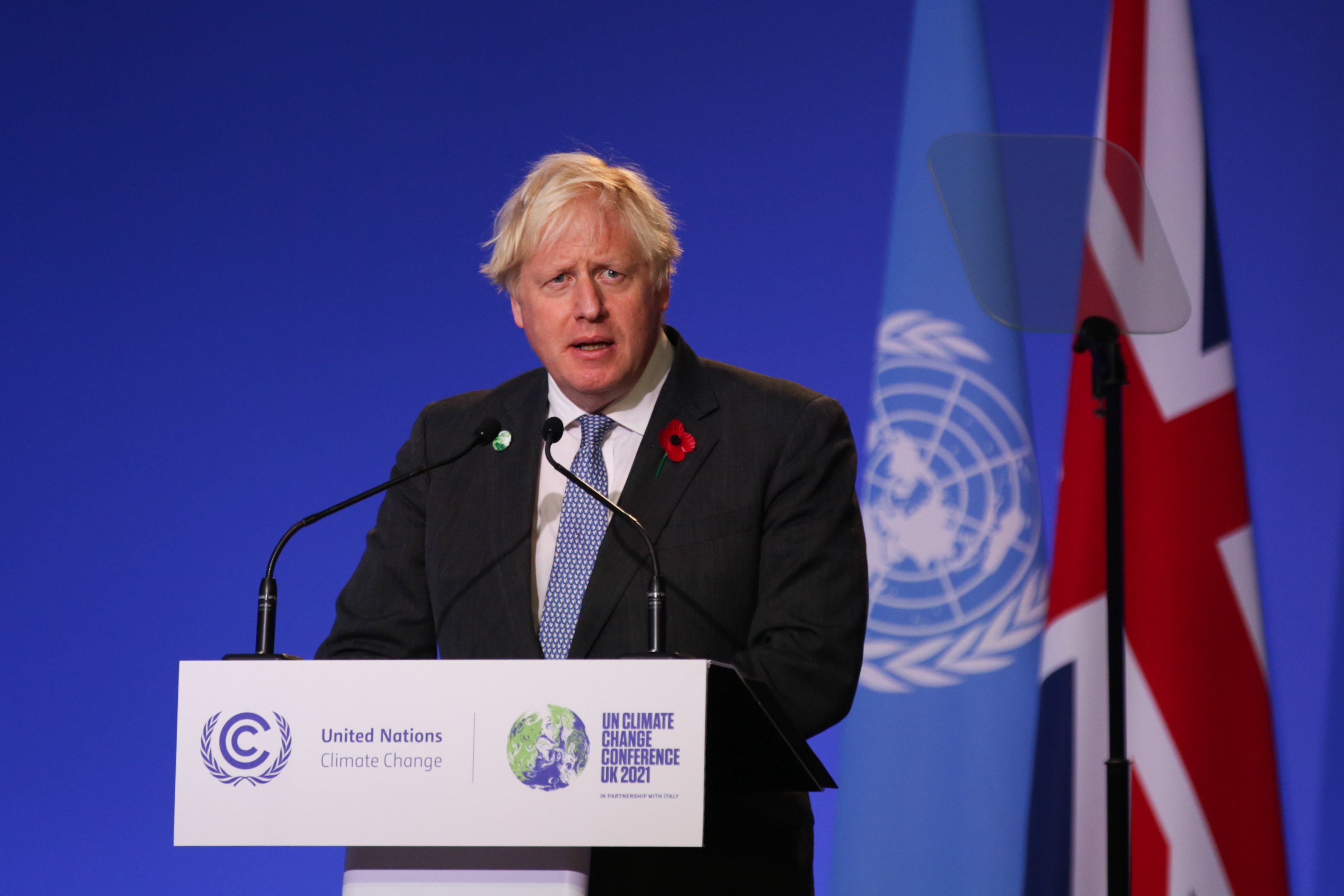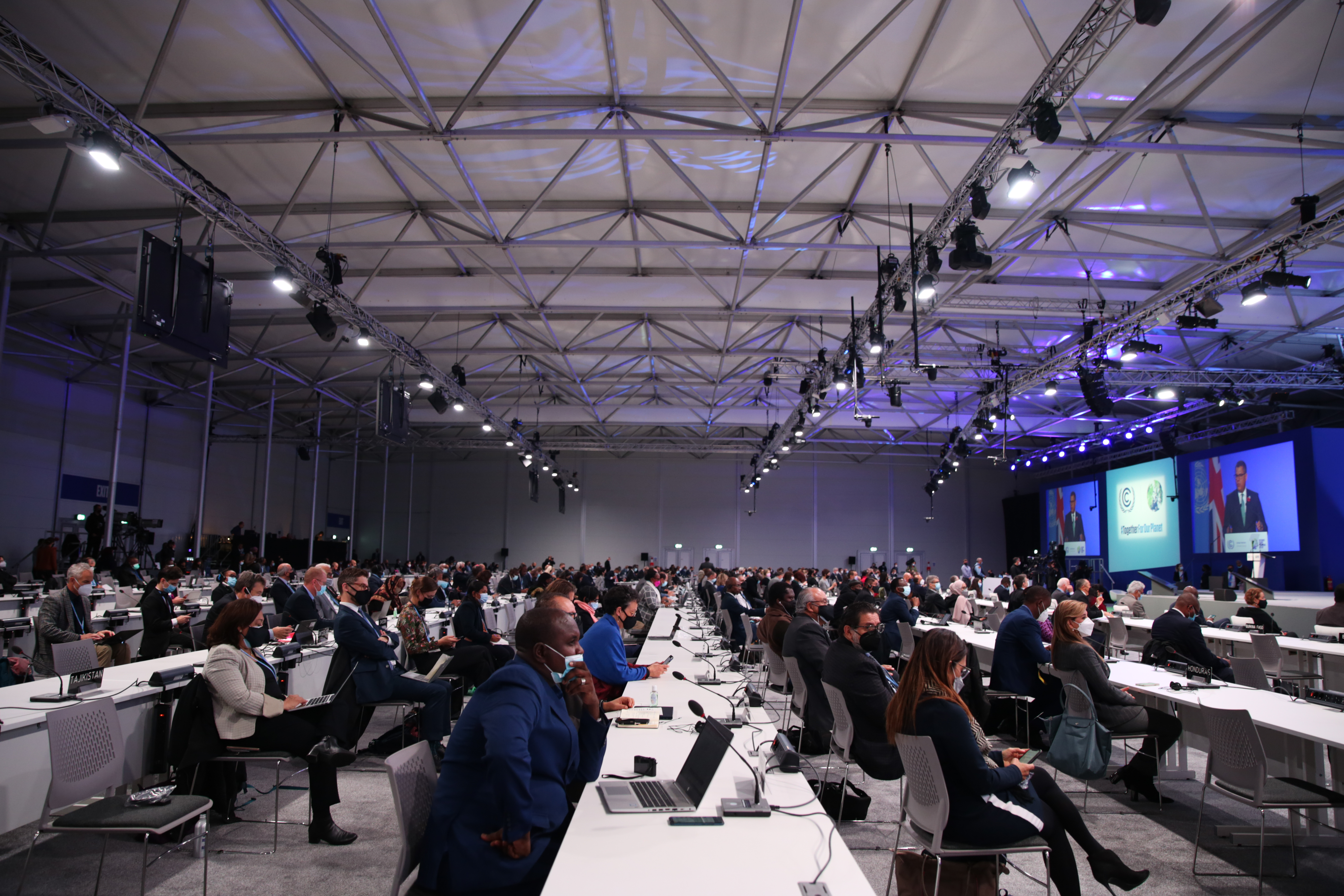COP 26 – what happens next?

Clare Taylor discusses what happened at the COP 26 that was held in Glasgow, Scotland in November . One of the biggest outcomes was the commitment to Net Zero by not just the Parties involved in the COP but also by a large group of companies, financial institutions and other bodies.
Back in spring this year I wrote about the then-forthcoming COP26 – what it was all about and what to expect from it. The reality was a mixture – there was some movement forward and there is a notable increase in momentum, but also a lot of putting things off yet another year, despite the statement in the Glasgow Climate Pact that the Conference of the Parties “Expresses alarm and utmost concern that human activities have caused around 1.1 °C of global warming to date and that impacts are already being felt in every region,” and stressing the urgency to act.
 Image credit: UN Climate Change
Image credit: UN Climate Change
This is bad news for business as well as the climate and all life on our planet, as it means continued uncertainty about what policy requirements to expect, and far more stringent measures will be needed when policy is finally implemented. It is also unsurprising, however, with so many different countries negotiating together at so many different stages, whether of technical development or of feeling the impacts of climate change.
So, what did happen?
Part of the Paris agreement was that parties to COP would all make reduction commitments, called Nationally Determined Contributions (NDCs), and that these would be ratchetted up every five years. These have increased prior to Glasgow, which is good, but not enough: even if all were fulfilled, expected warming would still be 2.4°C, which is dangerously high. And, of course, targets on their own achieve nothing; what’s needed are concrete plans that will achieve them. These are still lacking, even in the UK, who retain the presidency until November 2022.
.jpg?lang=en-GB) Image credit: UN Climate Change
Image credit: UN Climate Change
But keeping to 1.5° of warming is still very much alive as a target, and part of the increased momentum is that the Glasgow Climate Pact requests new NDCs within one year this time, not five, strengthened sufficiently to align with the 1.5° goal and focusing particularly on the short-term targets for 2030, by when carbon dioxide emissions need to be reduced by 45% relative to 2010 to achieve the desired trajectory.
On the business front, perhaps the biggest outcome from Glasgow is commitment to Net Zero by not just the Parties involved in the COP but also by a large group of companies, financial institutions and other bodies. It is now very firmly embedded on the global business agenda.
 Image credit: UN Climate Change
Image credit: UN Climate Change
A large part of decarbonisation rests with the energy sector, but emissions will have to fall in all sectors, and consumers will need to play their part too. This industry can expect to be receiving more pressure from customers about its contribution to reduction, and to quote a post-COP report from McKinsey, “lowering emissions represents one of the thorniest value-chain issues we have witnessed.” Issues the print industry need to address include improved energy and resource efficiency, good data and information disclosure both in-house and within the supply chain, and the need to switch to zero carbon transport, both inwards and outwards.
Goods delivery is a major challenge, as not only does it require suitable vehicles, but also infrastructure, and there’s still a long way to go for heavy goods vehicles. There are, however, various initiatives across the globe involving collaboration to achieve zero emission road transport, including the European Clean Trucking Alliance and the World Economic Forum’s Road Freight Zero.
Many of those companies that have declared net zero commitments have yet to publish detailed plans, making it hard to predict the focus points of customer pressure for printers, whose customer base is wide and diverse, but the British Retail Consortium’s Climate Action Roadmap gives a good guide to one sector. Data features strongly here, with one pathway putting greenhouse gas data at the core of business decisions and another looking for supply chain transparency for sustainable sourcing. Goods for retail are their main impacts, so likely to be be top of the list for them, but print will be in there.
 Image credit: UN Climate Change
Image credit: UN Climate Change
The effect of two further big pledges – on methane and coal - will directly affect other industries more than printing, although there may be pricing implications. There were also notable exceptions among the signatories.
The pledge to cut methane by 30% by 2030 is significant if adhered to: due to its nature, on a 20-year timescale methane is 84 times more potent as a greenhouse gas than carbon dioxide. About a third of man-made emissions are from the energy sector, and to help with reduction the International Energy Agency has published a report detailing practical measures and a roadmap and toolkit. The other main sectors from which action will be needed are waste and agriculture.
The pledge on coal, despite it being watered down at the last minute, is also a big move forward. It will be much harder for some countries than for others – in the UK, for example, coal provides minimal input to the national energy grid – as I write this on a dark, rainy and cold evening, only 4% of UK electricity is being supplied by coal, and in long periods this year it was not used at all. In other countries, however, coal is a major energy source, and for developing countries this is one of the areas where the agreements to provide finance and technology come in: to facilitate leapfrogging the stages of coal reliance we and many other countries went through.
 Image credit: UN Climate Change
Image credit: UN Climate Change
It will be interesting to see what happens with a pledge made to end and reverse deforestation by 2030, as a similar pledge was made in 2014 but not much was done about it. The forests mainly under threat and in need of protection are those on land being cleared for other purposes, not those providing the printing industry with paper, but those printers using paper may find it useful to have all the facts on paper and forests to hand in case of queries from concerned customers. The EU has responded by drafting laws to ban beef, palm oil, soy, coffee, cocoa and other products linked to deforestation from entering the EU, and similar trade measures from other parts of the world are expected.
There is also strong recognition of the need for adaptation – change is already happening and will inevitably accelerate. This is another issue for businesses, which need to be prepared and able to work with a changing climate and increased severe weather events. It is also another area where finance and support is needed from the wealthy industrialised countries, who have contributed most of the greenhouse gases to the atmosphere, to the developing countries – who are disproportionately on the receiving end of the impacts.
So, to summarise: progress has been made, though not enough, and businesses still await clear plans from governments to know their future direction. Meanwhile, many more are aiming towards Net Zero themselves, will be expecting their supply chains to support them, and our industry can and should be part of this move.
Topics
Interested in joining our community?
Enquire today about joining your local FESPA Association or FESPA Direct
Recent news

The power of digital design tools in screen printing
James Gatica shares how the combination of traditional screen-printing techniques with cutting-edge digital design tools is revolutionising the way designers conceptualise and produce custom decorative pieces.

Key trends and market shifts on Personalisation and Sportswear with Epson
Debbie McKeegan speaks to Duncan Ferguson, VP of Commercial and Industrial Printing at Epson Europe about the market shifts and current trends around personalisation. Duncan shares the key trend of merging both fashion and sportswear.

